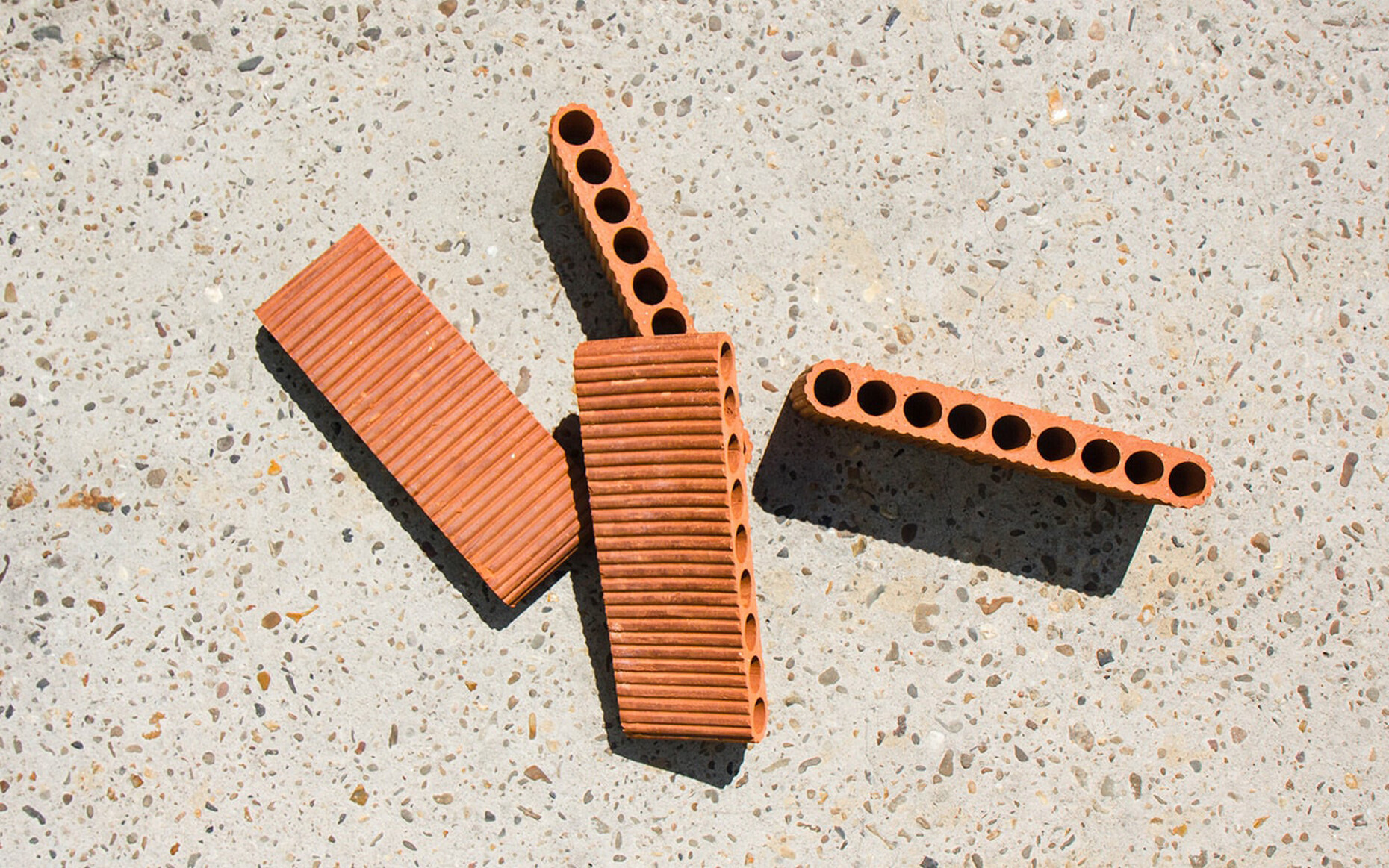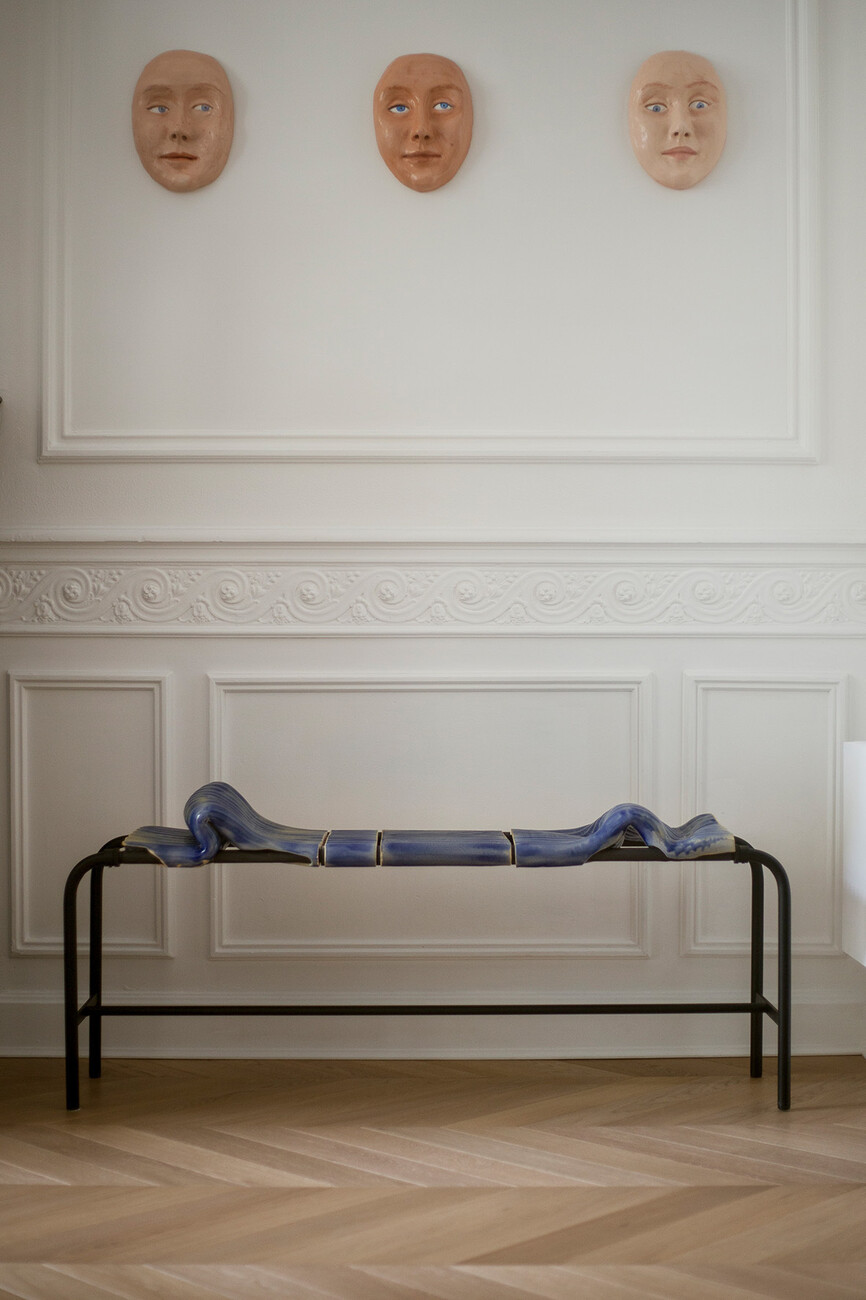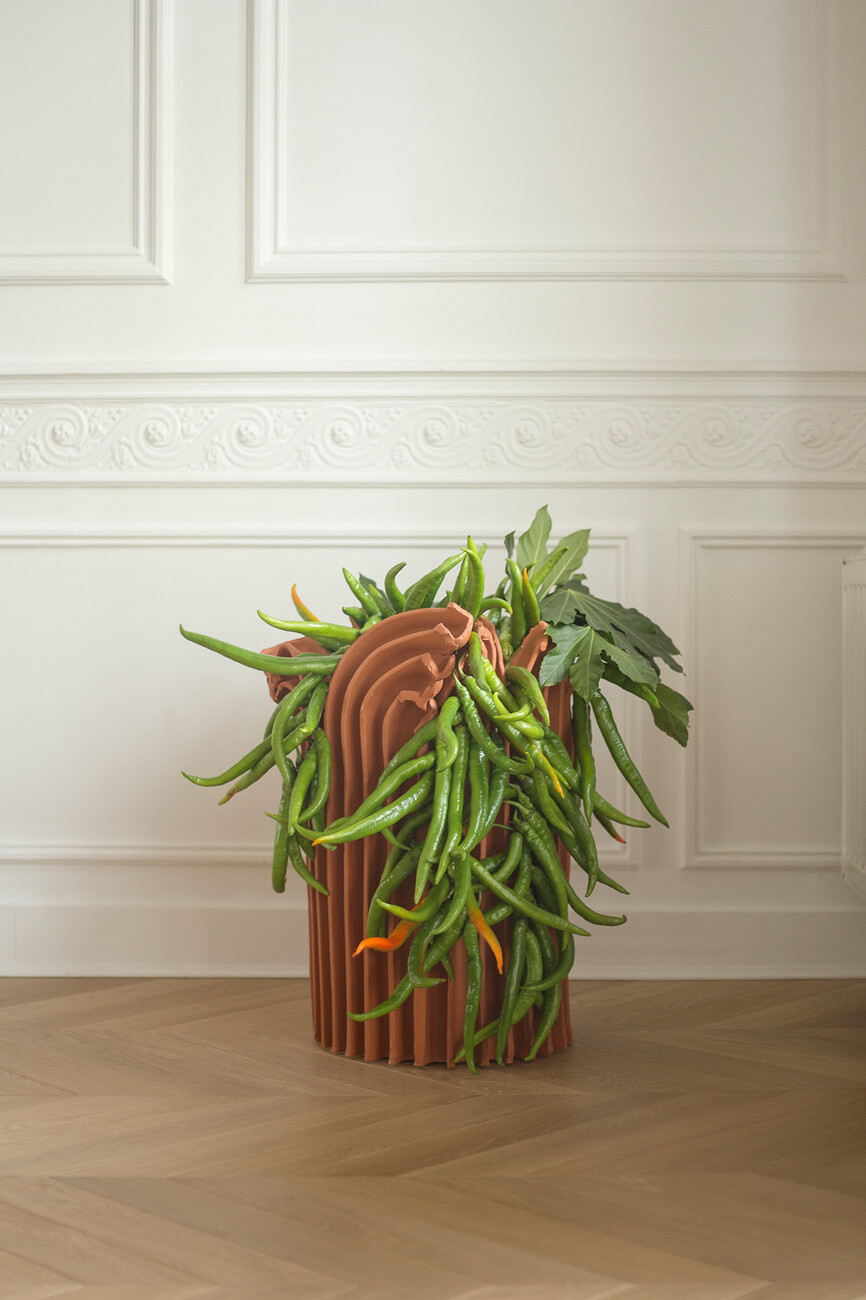PORTRAIT
Creative translations
Industrial processes and manual skills can and should mix, according to Charlotte Cigan and Martin Duchêne. A special focus of their ceramics studio for design and research based in Brussels is the way the objects are created. For them, a new interpretation of processes involves the courage to try and make mistakes – everything remains in flux, nothing is clear from the outset. Only the basis is always the same: a ceramic mass that is compressed through various moulds.
For their experimental approach, the duo draws inspiration from architecture at times: "Balik" was thus born out of the idea of detaching clay from its 'usual' fields of application. "We wanted to remember that clay, before it becomes porcelain cups or vases, is first and foremost a building material that we can walk or sit on, something we can trust. Instinctively, we started to shape our own brick, our own module, to build different kinds of structures and sculptures," they say. The "Ogive" project, on the other hand, began with the question of how to integrate the handle into the shape of the cup and still protect the hand from the heat. Their experiments led Charlotte Cigan to an architectural model that sits firmly on several fins. In the implementation and in the course of the casting processes, Studio Biskt developed the idea of modular forms and different modules, which ultimately made "Ogive" not only a collection of cups, but an experimental field of container forms. For "Tulumba", meanwhile, the shape of the Turkish dessert of the same name served as inspiration: the terracotta soliflores are then tied together into bouquets with bands specially developed for this purpose.
Interview with Studio Biskt:
Linda Pezzei: How was ceramic chosen as the favourite material?
Studio Biskt: That was more than ten years ago when Charlotte happened to be walking through the streets of Paris and came across a ceramics market. This discovery gave her the idea to try her hand at the trade.
You combine industrial processes and craftsmanship – where do you see potential and challenges?
Studio Biskt: The advantage of combining these two worlds is that we can realise a smallscale production in a really tiny workshop. The challenge lies in the fact that we do things mainly with our hands – you should be able to see that in the end product.
Is there a current project that is particularly challenging for you – and why?
Studio Biskt: We are currently working on a solo exhibition for 2023 and would like to show something new that is nevertheless comparable to what we are doing at the moment. Rethinking our creations while keeping in mind that they should have the same appeal to viewers is a complex task.
What associations do you want to inspire with your design pieces?
Studio Biskt: The main aspect of our work is the blurring of the line between object and sculpture, between handmade pieces and industrial products.
Where do you get your inspiration from and how does a typical design process work?
Studio Biskt: We are mainly inspired by public space. As the urban environment is full of industrial objects without any aesthetic intention, we love to transfer these forms and functions into the world of craft.
An object or project that you would like to realise?
Studio Biskt: Don't ask why, but we would like to realise an all-ceramic staircase.
Life without design ...
Studio Biskt: We are not really about the design, but rather about the creation. We both follow the urge to put our ideas and creativity into action – that's what's happening at the moment through the clay.




















